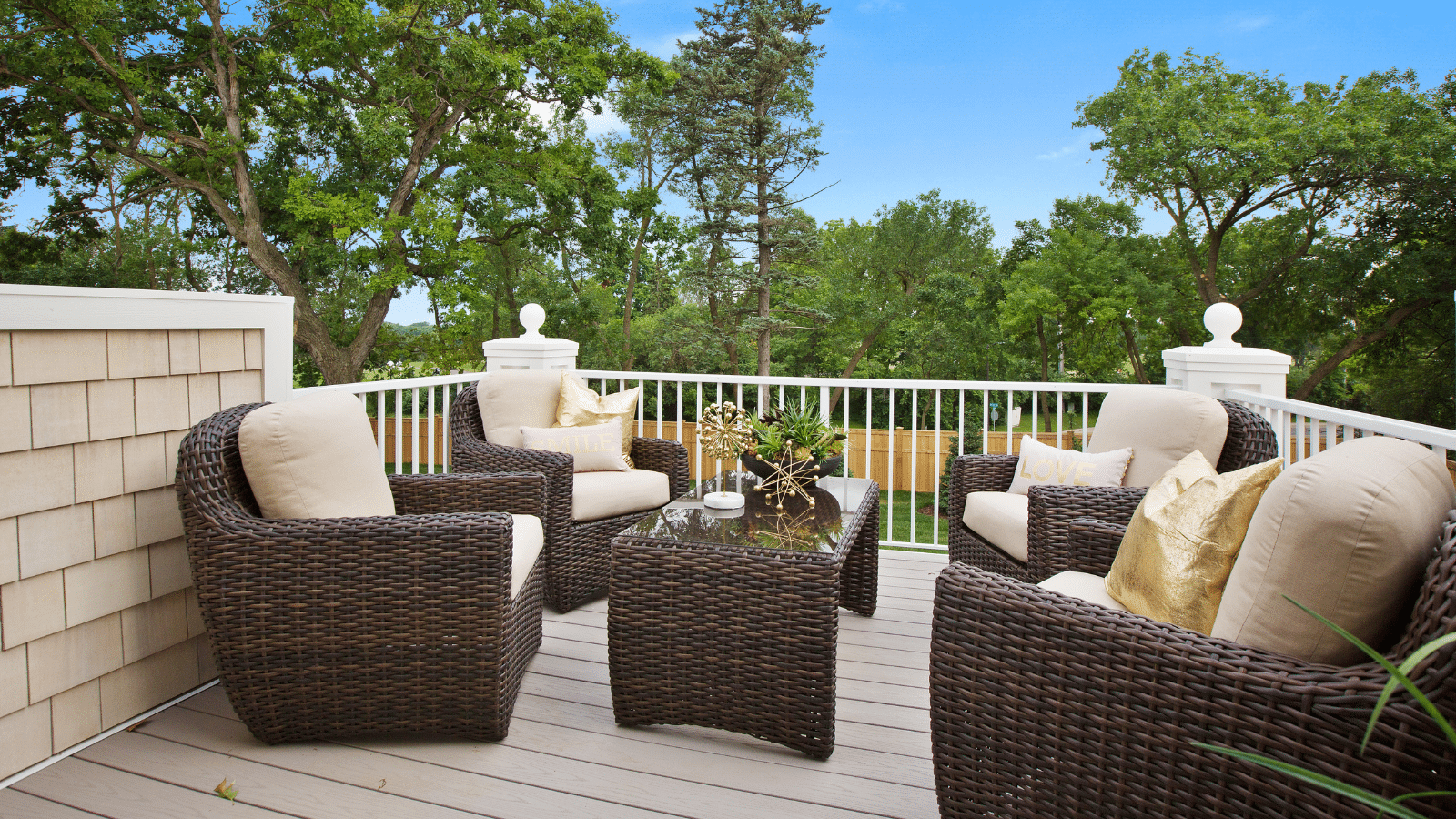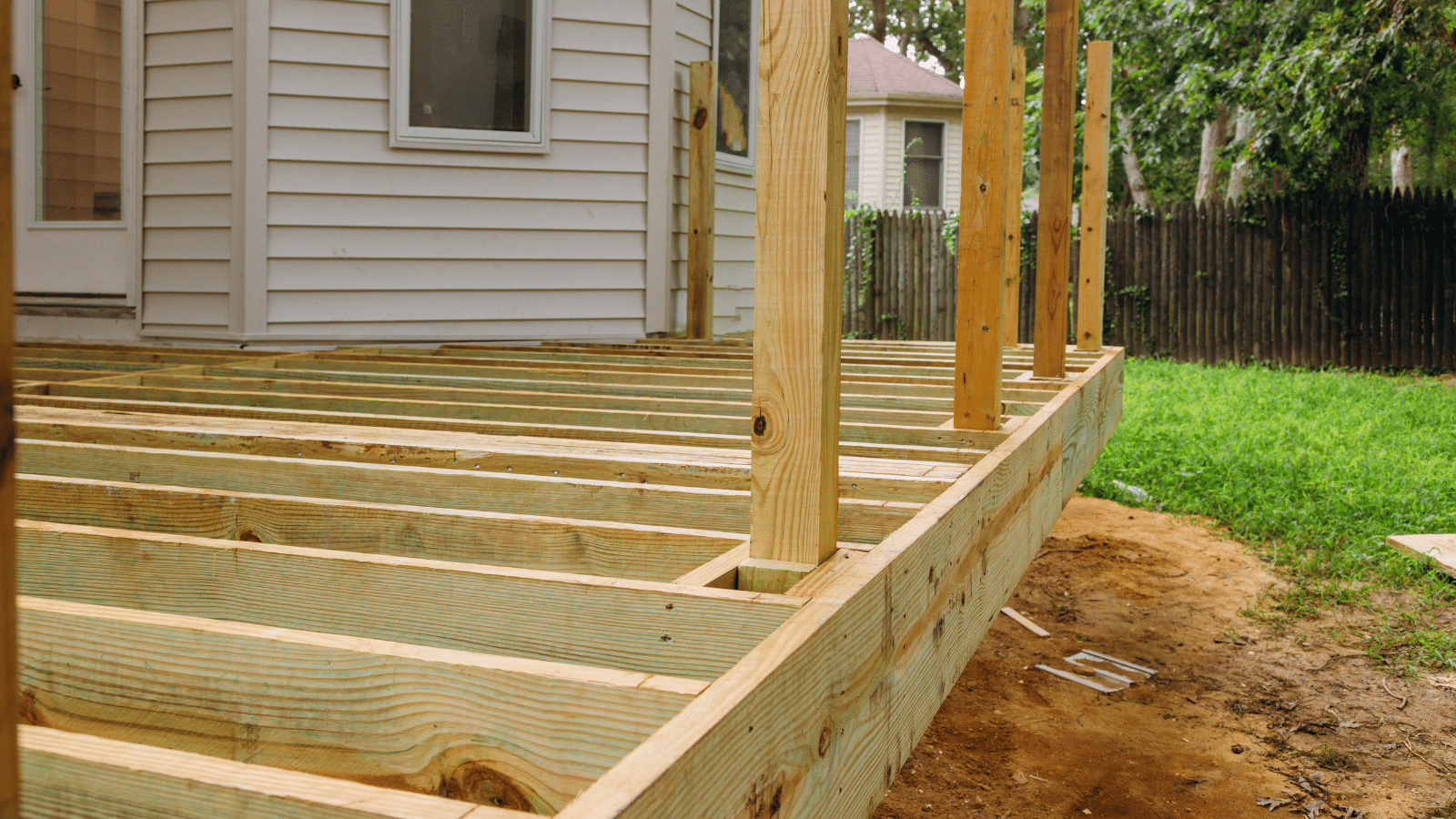Building a deck can be a great way to enhance your outdoor living space and add value to your home. Decks serve as a gathering spot for families to spend time outside whether it be outdoor cooking, hosting a special event, or just gathering on the outdoor furniture to visit. A deck may be just a deck, but these structures are more complex than what meets the eye. Before you start a deck project, there are six things you need to know to ensure that your project is successful and meets your needs and budget.
In the first part of this two-part series, we’ll talk about codes and regulations, design, and footings.
Building codes and regulations
Before starting any construction project, it is important to check with your local building department to ensure that you are following all the necessary codes and regulations. This includes obtaining any necessary permits and ensuring that your deck meets safety requirements. Many municipalities provide helpful information online describing the requirements necessary for a successful deck build. Professional deck builders will complete this process for you, but it may be prudent to know the rules yourself.
Getting a permit is important when building a deck because it ensures that the construction is safe and meets local building codes and regulations. The permit process involves submitting plans and specifications for the deck to the local building department, which will review the plans and inspect the construction to ensure that it meets safety standards.
If you don’t get a permit when building a deck, you may face legal and financial consequences. Building without a permit is illegal and can result in fines, penalties, and even legal action. In addition, if the deck is not built to code, it may be unsafe and could pose a risk to you and your family. If you try to sell your home in the future, you may also run into problems if the deck was built without a permit, as it may not be up to code and could affect the value of your property. Obtaining a permit may require some extra effort and cost, but it is well worth it in the long run to avoid potential legal and financial issues.

Design
The design of your deck should consider the size and shape of your yard as well as any existing structures or features. Choosing the best deck design for your home can be a fun and exciting process, but it can also be overwhelming. You should also consider the intended use of the deck, such as whether it will be used for entertaining or relaxation.
Look for inspiration online or in magazines for deck design ideas that appeal to you. Consider the style, color, and layout of the decks you like. You should also consult with a professional deck builder or designer who will provide blueprints and 3D renderings that will allow you to see the project before you start. However, you should be prepared to pay for this service, especially for more complicated designs.
The cost of your deck will depend on a variety of factors, including the size, materials, and design. Choose materials that will fit your budget and allow you to use the deck in the way you intend. There are a variety of materials that can be used for decking, including wood, composite, and PVC. Each material has its own advantages and disadvantages that affect the budget and aesthetics of the deck.
By following these steps, you can determine the best deck design for your home that meets your needs, fits your budget, and enhances the overall look and functionality of your outdoor space.

Footings
The footings of your deck are critical to its stability and longevity. The best options for deck footings depend on the size and location of your deck, as well as the soil and climate in your area. The most common options for footings in our area include concrete piers, diamond piers, and helical piers.
Concrete footings are a popular choice for deck foundations because they provide a stable and durable base for the deck. They are typically poured into a hole in the ground and sometimes reinforced with steel rebar. The depth needs to be below the frost line and the diameter is determined by the weight of the deck plus the estimated total weight of those who will use the deck and any furniture or equipment (such as grills) you will have on it. Concrete is the most versatile pier for deck design but the most labor-intensive.
Diamond pier deck footings are a type of foundation system for decks that use precast concrete blocks and steel pins to provide stability and support. The system consists of a series of diamond-shaped concrete blocks that are connected by steel pins and anchored to the ground.
The diamond pier system is designed to be easy to install and requires minimal excavation, making it a good option for decks in areas with rocky or uneven soil. The system can also be used in areas with high water tables or other soil conditions that make traditional footings difficult to install.
Helical piers are steel shafts with helical blades that are screwed into the ground. They are a good option for decks in areas with unstable soil or high water tables. These footings are difficult to install accurately and may require engineering reports and soil testing to pass inspections
Many footing types require specialty tools that are costly to purchase or rent. When choosing the footings for your deck, it is important to consult with a professional to ensure that it meets local building codes and regulations and is appropriate for your specific needs and location.
In the second part of this important topic, we’ll discuss three more important things to know about before you build your deck: the framing, decking, and guard rails. Stay tuned!
In the meantime, if you have questions about a deck project, please reach out to the talented team at Forsman’s Finest. We’d love to help!

